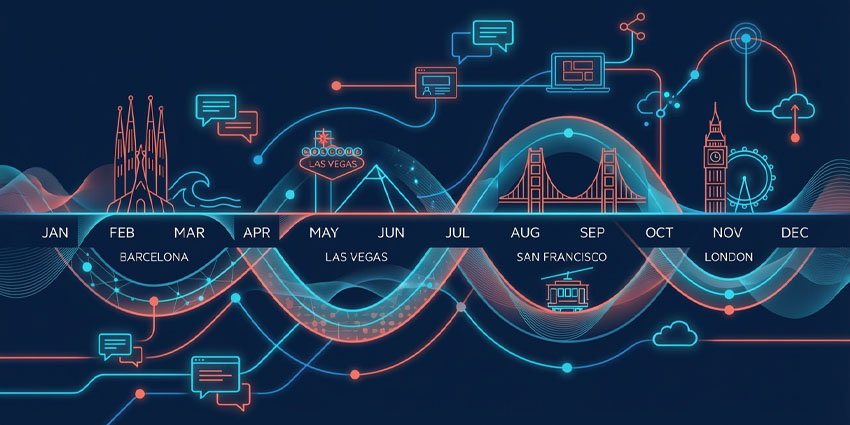Microsoft Teams has expanded from a basic collaboration tool to a mission-critical piece of enterprise infrastructure. Yet, most organisations still manage it reactively, waiting for problems to arise before addressing them. This approach is proving increasingly costly and inefficient as Teams becomes ever more deeply integrated into business operations.
Martello has responded to this challenge by launching its enterprise version of a new cost model developed in partnership with Enable UC Partner and Kevin Kieller. This breakthrough model quantifies what many IT leaders have suspected: reactive Teams management silently drains IT budgets while eroding user experience.
The model’s findings are compelling. It highlights that organizations implementing proactive Teams monitoring can reduce support tickets by 60 percent and cut operational costs by up to 70 percent. These savings can quickly reach $100,000s annually for mid-to-large enterprises. As Kieller noted, “For an organization with 1,000 users, proactive monitoring has the potential to save $270,000 per year in IT savings.”
The Alarming Price Tag of Break-Fix Teams Management
The reactive model, where IT waits for end users to report issues, remains the default in many enterprises. But as the Enable UC research makes abundantly clear, this approach is significantly more expensive than most IT leaders assume.
The cost isn’t limited to merely ticket resolution time. It encompasses the productivity lost while users experience degraded service, the hours spent by IT tracing the source of intermittent problems, and the broader organizational impact when comms and collaboration tools become unreliable. These don’t even include the less tangible, but very real, costs of missed sales opportunities, customer dissatisfaction, or undermined internal culture due to repeat service frustrations.
Moreover, these costs often go unmeasured because they’re distributed across different budgets and departments. However, as Kieller and Enable UC underline, the absence of visibility doesn’t mean the impact isn’t all too real. The more Teams becomes embedded in core business workflows, the greater the risk of cascading operational repercussions when performance stutters.
The Proactive Monitoring Revolution
Proactive monitoring flips this equation on its head by pinpointing and resolving issues before users are affected. This strategy leverages tech processes such as synthetic transaction testing, analytics, and continuous service telemetry to provide end-to-end visibility across the entire Teams delivery path, from the Microsoft cloud and enterprise network to user devices and endpoints.
The Martello/Enable UC model illustrates that moving from a reactive to a proactive strategy can reduce support ticket volumes by as much as 60 percent. That shift alone dramatically eases the burden on IT teams, empowering them to spend less time firefighting and more time focusing on higher-priority tasks like strategic initiatives.
In tandem, proactive monitoring can slash IT support costs by up to 70 percent. This frees up resources that can be reinvested in areas such as digital transformation, cybersecurity, or user enablement.
In practical terms, this means that an issue affecting a Teams call between two offices can be detected automatically, diagnosed in real time, and resolved before workers even notice. It also means IT leaders can identify trends, such as rising latency in a particular region or recurring authentication issues, and jump to the rescue and intervene before those trends undermine productivity.
The model also demonstrates that organizations benefit from faster mean time to resolution (MTTR), higher service availability, and boosts to user satisfaction. These outcomes aren’t abstract but translate into tangible business benefits, including more responsive customer service, fewer missed meetings, and greater confidence in Teams as a dependable platform.
Proven Results, Not Promises
Martello’s new enterprise cost model stands apart because it is not hypothetical. It was built using real-world data via interviews with mid-sized and large organizations, and it smoothly aligns with Microsoft’s published best practices for layered monitoring.
Enable UC designed the model to be deliberately conservative rather than relying on optimistic assumptions or inflated ROI projections. This ensures its conclusions are credible in front of IT decision-makers, CFOs, and procurement teams alike.
The model factors in not only IT support costs but also specific organizational elements such as average productivity loss per incident, time-to-resolution benchmarks, and user-to-support ratios. It reflects how enterprise Teams environments work in reality, where multiple departments rely on Teams concurrently, and any derailment in performance can have wide-reaching repercussions.
Crucially, the model’s value scales with enterprise size. In organizations with 10,000 users or more, the potential savings are exponential. A company operating at that scale might reduce IT support costs by two-thirds by adopting a proactive monitoring approach, based on reductions in downtime, support overhead, and productivity loss.
These benefits aren’t theoretical for enterprises already using Martello’s digital experience monitoring tools. Customers have reported measurable improvements in uptime, faster problem resolution, and increased satisfaction from users and executive stakeholders. Martello’s Vantage DX platform allows IT teams to anticipate performance issues, optimize service delivery, and communicate transparently with business leaders about Microsoft Teams’ health and impact.
The Bottom Line for IT Leaders
Martello’s enterprise cost model delivers a clear, data-backed conclusion for IT and C-suite decision-makers: continuing to manage Microsoft Teams reactively is not only operationally risky but also financially inefficient. As Teams becomes increasingly invaluable to business continuity, hybrid work, and global collaboration, the costs of downtime and degradation increase in parallel and exponentially.
Proactive monitoring protects Teams’ performance, unlocks budget efficiencies, elevates user experience, and underpins strategic IT priorities. With those game-changing cost savings and tangible gains in service reliability, the case for change is stronger than ever.
For organizations serious about maximizing the value of their Microsoft Teams investment, the question is no longer whether they should move to proactive monitoring but when.
Want to find out more about how proactive monitoring can produce significant savings from your Microsoft Teams stack? Click here to discover more about Martello’s Vantage DX platform.







